Evolutionary Optimality and Plants
Professor of Biosphere and Climate Impacts Iain Colin Prentice on CO2 concentration in nature, photosynthetic ...
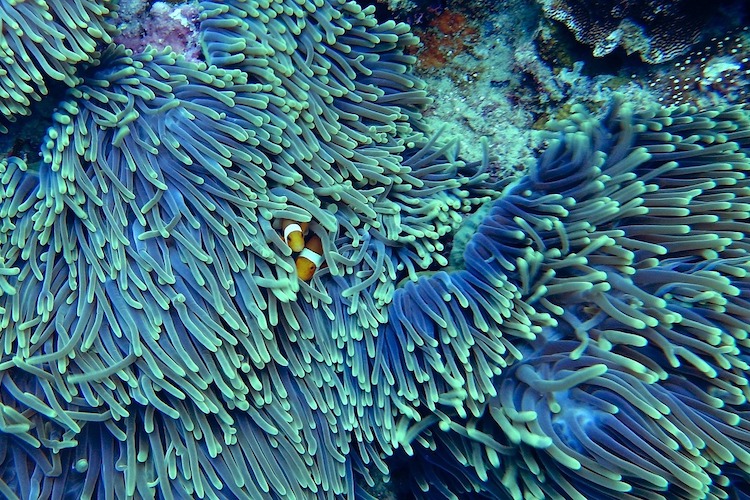
Shallow-water reef-building corals are animals, but you can almost think of them as animals, vegetables, and minerals. Corals capture food with their tentacles, but they also have a symbiosis with single-celled algae called zooxanthellae. Zooxanthellae are a type of dinoflagellate, a group that also contains the algae that cause red tides. Because they are photosynthetic, the zooxanthellae also make the coral organism as a whole perform in a plant-like, synthetic fashion. Finally, corals secrete a skeleton, with the animal and its symbionts sitting in a stony cup made up of the mineral aragonite.

Because of their unique qualities, corals have been studied for thousands of years. Even Aristotle described them in his Scala Naturae. However, if we consider more recent history, Charles Darwin was probably the most famous person to study corals. In fact, he proposed a theory for the origin of coral reefs, and particularly atolls, in the Pacific, which turned out to be largely correct despite the fact that it took a long time for scientists to prove.
Actually, Darwin’s theory, first described in his monograph The Structure and Distribution of Coral Reefs, is very important. He hypothesized that if there’s a volcano at the surface of the ocean, reefs can form along the edge, and then, as the volcano slowly subsides and sinks, when it’s no longer actively growing, the corals keep up, so you end up with something called a Fringing Reef. That means there’s an island in the middle of a lagoon and then a ring of corals around it. Eventually, the volcano actually sinks even further, so there’s no island in the middle and just a ring of corals, which is how a classic atoll appears. And what’s incredible is that Darwin created that theory by simply looking at maps before he ever saw real-life coral atolls on his Beagle voyage.

Then, after Darwin, at the beginning of the 20th century, there was a big expedition to the Great Barrier Reef to study corals. And later, in the middle of the 20th century, there was work by people like Thomas Goreau, who started looking at corals as animals, and in particular at their symbiosis. And overall, there is quite a long history of study, both reefs, which were, especially in the early days, studied almost as much by geologists as by biologists and of the corals themselves by zoologists.
For some corals, symbiosis with the plant cells allows them to grow relatively fast. That’s important since in shallow water, the ability to form a reef, an actual structure, depends on the ability to grow fast because there are all sorts of things constantly chewing chunks out of their skeleton and breaking it down. Consequently, it’s a kind of race between creation and destruction, and in shallow water, there would be no large reefs without the symbionts that make it possible for there to be a net increase in skeletal material over time, which is what makes a reef.
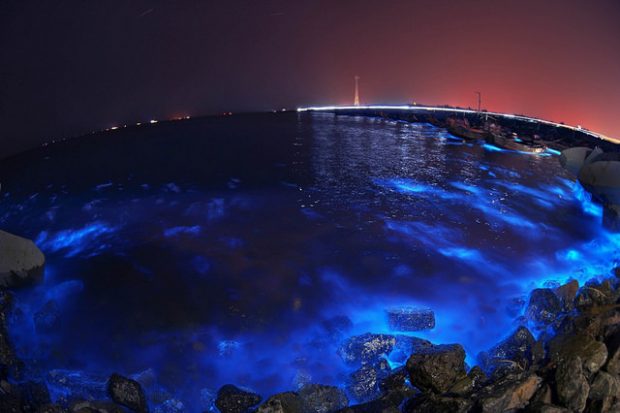
In deep water, however, there is much less physical or biological disturbance and some deep water corals also form reefs, even though they don’t have that symbiotic relationship and exist without relying on energy from the sun. In addition, there are many small corals that sometimes live as solitary organisms, sometimes as small colonies, and that don’t build large reefs.
Coral reefs mainly form in the tropics, in shallow water. You might find them in the subtropics, but not in colder water. The 20000-year-old Great Barrier Reef, located near Australia, is the largest, and it is 2000 kilometers in length.
Corals are very simple in structure. They are related to things like a hydra, sea anemones, and jellyfish. They have some form of a skeleton, which differs based on the type of coral, and a very simple design called a polyp. The latter basically looks like a tin can with the top of one side removed so that there’s an opening at one end of the cylinder, and that opening is surrounded by tentacles. Food goes in through that opening, and then waste products are released through that opening as well. So it’s a very simple biological design – they don’t even have true organs the way that higher animals do.
Despite that simplicity, there is a very large variety of corals: something like 1500 species. The genus Acropora is the most diverse, and they are often the most common corals in shallow water, especially in the Pacific. They all tend to be branching in one way or another – some form large “hay fields” of Acropora stems, while others are bushier, and few grow as large plates or tables. They are all distinguished by the fact that they grow really fast for a coral.
Another interesting type is the great star coral, which is a stony coral that can be found in the Caribbean. What’s amazing is that even though it is abundant and has been studied by many scientists, there turned out to be multiple species within what we once thought was just a single species. That really goes to show that there are still discoveries to be made in the field of coral research, at even the most basic levels.
Corals also have a very unusual reproductive biology: a lot of them reproduce only once a year during an event called mass spawning, where they release these packages of eggs and sperm in a kind of mega orgy underwater. This way, they can reproduce sexually by releasing gametes, but they also reproduce by budding new polyps or even by fragmenting into bits and then regrowing from the bits, so even in that sense, corals are truly diverse.
Corals create a physical environment by virtue of their skeletons, so they provide a lot of three-dimensional complexity that many other organisms take advantage of. These organisms live in the nooks and crannies of corals, attach to the under surfaces, or eat them. Certainly, on a per-area basis, reefs are the most diverse of all marine ecosystems. We know even less about the organisms that live with corals, at least a million species of them, maybe close to 10 million – we actually have no idea how many. If you take apart a reef, you can find this unparalleled diversity, all of these organisms that are spectacularly cool, beautiful, and interesting together in such a tiny area. All reefs together are about the size of France, and yet they house between a quarter and a third of all life that lives in the ocean, so they are pretty amazing.

Lots of different families of fish, seaweeds, snails, clams and octopus, shrimp, crabs, and lobsters, and other less well-known groups live in corals. Take almost anything that lives in the ocean, and you can find an example of it on the coral reef. Sometimes, the organisms that inhabit coral reefs even help support them. Fish, for example, control seaweeds, which is extremely important for the health of corals. Seaweeds compete with corals, so you really need a healthy fish population to keep the seaweeds from overgrowing them. However, this is no longer the greatest danger corals face today.
The corals that live with symbiotic algae are particularly sensitive to really small increases in temperature. As a result, when it gets even about 1-degree Centigrade or 2 degrees Fahrenheit higher than the normal seasonal maximum in which a population lives, it really compromises the ability of the dinoflagellates to photosynthesize. That sets off a kind of chain reaction, and the end result is a breakdown of the relationship. The corals expel the symbionts in a process called coral bleaching since, without symbionts, they are mostly white. And the corals don’t necessarily die immediately, but if conditions don’t return to normal pretty quickly, they start dying. They starve to death because they need the food that the symbionts provide.
But that’s only the direct effect of global warming. In addition, carbon dioxide – the root cause of warming – also changes the chemistry of the water, making it more acidic, which results in it being harder for corals to grow.
The future of corals really depends on how people choose to act in the next decade or so. That will determine how severe global warming is, and how severe ocean acidification is. It’s also the case that most of the damage to corals today has not been caused by global warming or climate change. It’s been caused by the local effects of overfishing, pollution, and habitat destruction. So if we do a better job providing local protection, that will buy us time to figure out how to solve the bigger, more complicated problem of climate change.
The Paris Accords that took place in the fall of 2015 was a big step in the right direction in terms of controlling greenhouse gas emissions. If the countries live up to their commitments, it will still not be enough, but it will point us in the right direction. In addition, lots of marine protected areas have been established to protect fish populations, which helps keep the seaweed levels low. Then there are also people working to make sure that water quality is good near coral reefs, which is really a question of managing land use, for instance, reducing fertilizer and controlling sewage. So a lot is being done on a local and regional scale to improve water quality and reduce fishing.
Today we are finding out a lot about corals using new genetic methods. For instance, we are finding out a lot about how corals respond to stress, including warming. For the last decade or two, there has been a lot of work done to figure out what allows some corals to resist the effect of global warming. The initial findings had to do with discovering that some of the symbionts are much more resistant to increased temperature than others, and that has led to a huge amount of work on the physiology of the mutualism between corals and dinoflagellates.
More recently, people have been looking at the genetic diversity within the coral animal itself and how it might help provide resistance to global warming. Research on the variation associated with the corals and their symbionts and how that variation can be harnessed to create corals that are more resistant to climate change is a big part of recent work, but there is really a lot of other types of research as well.

For instance, coral disease is a big problem now, and a lot of research focuses on that. We know a lot more about coral diseases than we used to and about coral bleaching. We also know a lot more about the relationship between local impacts and coral reef health. In a 2016 meeting in Hawaii, there were about 2000 people, and 112 conference sessions over 4 or 5 days, so hundreds and hundreds of papers were presented just at that one meeting alone. From this large amount of research devoted to corals, scientists hope to learn a lot more about those beautiful, unique, and amazingly diverse organisms.
Edited by Alina Shubina
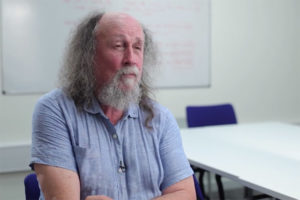
Professor of Biosphere and Climate Impacts Iain Colin Prentice on CO2 concentration in nature, photosynthetic ...
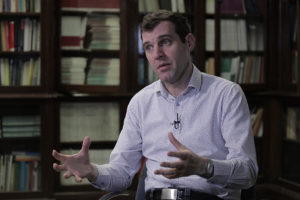
Meteorologist Chris Brierley on the Southern Oscillation, the background state of the Pacific Ocean and why it...
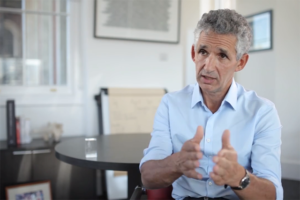
Biologist Tim Spector on the different ways of assessing biological age, twin studies, and the microbiome